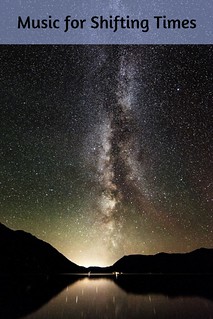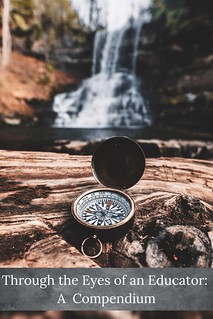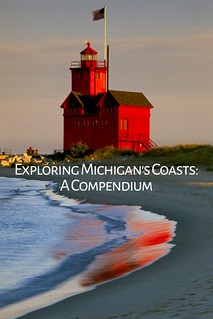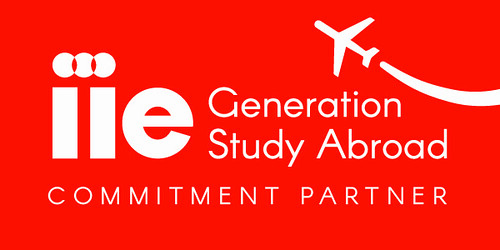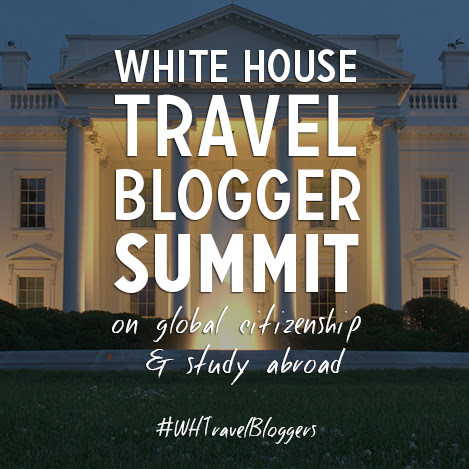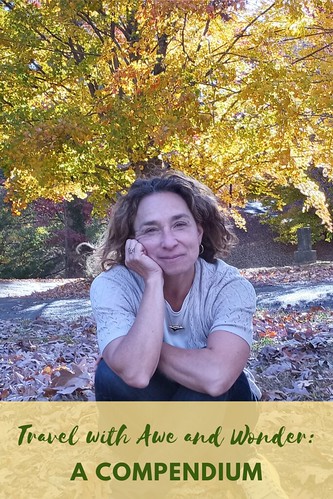Through the Eyes of an Educator: The benefits of connection
“Deep human connection is… the purpose and the result of a meaningful life - and it will inspire the most amazing acts of love, generosity, and humanity” - Melinda Gates
School’s out for summer! In the northern hemisphere, it’s the height of the sunshine season. Picture ice cream dripping down happy toddler faces, blue tongues from the best ice pops around, running through sprinklers, lake life and beach days, unstructured playtimes, and firefly chasing.

Some of my favourite memories are made in flip flops, and, I’m guessing that for many of you, the same holds true. Summer, free from the overscheduled calendars, time to read the books you choose, and get that good kind of tired from all the fresh air. Whether you’re hitting a sports game, lounging outside watching clouds shift shape, or meeting with friends to wander a farmer’s market, or adventure elsewhere for the day, there’s a taste of freedom to summer that’s only sweetened by spending time with those who light you up.
When the doors at school year’s end fling open, all the awesomeness of summer awaits. Yet without those structured organizations or scheduled lessons, it’s up to the individuals to make those social connections happen…and sometimes, it seems like a daunting task.
Social connections have more benefits than perhaps we’ve given them credit. From a young age, there are playdates and playgroups, spontaneous neighborhood meetups, and collective sports and arts activities as soon as we can walk (and sometimes even before then). School, youth groups, summer camps, extracurriculars, teams, and community groups take up much of our time from the moment we enter the world of education. Daily we have countless interactions with peers, teachers, mentors, guides, friends, family and community members…not to mention the zillions of connections formed in the online universe. And then, come summer or graduation, that formal momentum of connection halts and it’s up to us to keep it going. Now what?

Once that time of formal education ends, how do we continue connecting?
Some of us know people we’d call super connectors.
Everywhere they go, they embrace humans and collect friendships. They introduce one to another, formulate collectives, encourage interrelatedness, and spread their positive light and energy. They make it more about a ‘we’ than a ‘me’. Some might be teachers creating safe spaces for all in their path to thrive. Some might be camp counselors or youth advisors who ignite meaning in a young person’s life and set them on a trajectory anew. I count myself lucky to have people like that, who I’ve met in spaces far and wide who share their zest and vitality and literally make you feel better just being in their presence.
Somehow, they make you a better you.

“Alone we can do so little; together we can do so much” - Helen Keller
Yet, some of us struggle to find those humans, or something stops us from putting ourselves in the spaces where we might be them. It’s hard to take that first step, it’s scary to show that vulnerability to walk into that club, show up to that try out, share your creative work, or raise a hand for that committee. A zillion questions of doubt or fear dance around our subconscious, shouting loudly. It’s up to us to let those noises fade into the background or even still, do it a little bit afraid.
You know what shuts them up? Action.
Taking the step puts those voices on notice, reminding them they’re not in charge. Stepping up to that open mic, onto the field, up to the stage, entering the competition, at that free pickleball meetup, or showing up at the networking thing all by yourself. That action, that does it: taking the step puts you on the road to connection.
With that risk brings epic rewards.
After 2008, with social media’s explosion, connections could now be formed more online in spaces far beyond chat rooms, but in posts, then stories, then reels, and years later the likes of snapchat and tiktok entered the fray. While it definitely has its drawbacks and flaws and often advances at light speed forcing the law and processes to try to keep step with it all, community wasn’t only in person now, it didn’t take airline tickets to ‘see’ one another, and there were far more ways to send mail than through the post.
After 2020, the world grew a little quiet; the likes of physical presence shifted to the greater online techverse and much of the world had to adapt to a new normal. Today, we Zoom connect, Teams video, or WhatsApp everything.
As we constantly witness the world shifting into whatever its next new version will be, what can remain the same is the desire to connect, the global accessibility of building community, and the social, emotional, and physical lifestyle benefits that come from cultivating connection.
Every bit of research shows us the benefits of connection: on mental health, on longevity, on physical health, on social and emotional growth, and so much more. Learning and growing your connection muscles pays us back tenfold. It goes beyond the friendships, the lessons, the talents, and the skills.
Connection shares humanity, encourages and teaches empathy, breeds compassion, adds humility as well as vulnerability, challenges stereotypes, embraces diversity, and levels the playing field.
Connection welcomes all and we are all better for it.

“Realize that everything connects to everything else” - Leonardo da Vinci
These days, everyone is busy doing all their things. Perhaps your connections are a walk with a mate in the morning, a rendezvous with the neighborhood peeps in the evening, or a friend catch-up during the day. Maybe your social interactions are with the humans you work with, cousins you connect with, or an online group you readily attend.
Recently, I’ve set myself a goal - it’s a simple rule of three. I ask myself to do my best to connect with three humans outside of the ones I share a home with each day. It could be a phone call, a meet up, a text exchange, or a social media chat. However it works, I aim for the rule of three at least four out of seven days of the week. It’s been a game changer in my happiness world and that of social interaction. Some days, it’s a former student who sends me skateboarding videos linking me to a world he’s always loved. Some days, it’s a friend who rings on her way home from work as the time difference works to our advantage. And some days, it’s attending an online group of humans who share a creative space and offer kind words of encouragement in a world that often does differently.
However you show up, show up. Put yourself out there. Plant the seeds. Smash your doubt and build your courage through action.

If you’re struggling with social anxiety, loneliness, or depression, seek those professionals who can help you on your path.
Blue Zones research reminds us of centenarians who celebrate constant connection.
Positive psychology evidence teaches that every act of social connection is an antidote to loneliness.
And medical studies prove that each step towards laughter, smiles, gratitude, and shared empathy is truly proactive medicine for the soul.
Take the steps to connect. You might just find a hobby, passion, purpose, or a support system that makes all the difference in your journey.

4 Tips about connection and how to create it
“Build a community. No one does big things by himself” - Barack Obama

Connection and how it helps
“I define connection as the energy that exists between people when they feel seen, heard, and valued; when they can give and receive without judgement; and when they derive sustenance and strength from the relationship” - Brene Brown
Some psychiatrists go so far as comparing social connection to vitamins: “just as we need vitamin C each day, we also need a dose of the human moment—positive contact with other people.” Humans are designed for connection. It goes beyond the communication level and it is at the core of physical and mental health, a collective force of lifestyle medicine - involving looking at the whole person’s wellbeing. A pioneer in the benefits of connection, Dr. Edward Hallowell in his 1999 book, Connect, felt connection meant ‘feeling a part of something larger than yourself, feeling close to another person or group, feeling welcomed, and understood’. (pmc.nbi)
Simon Sinek, (a Brandeis grad like myself) showcases the art of connection in a now well-known 8 minute rule. Sometimes you need that focused connection, holding someone’s attention (which, in today’s day and age is an often daunting and fleeting endeavor), and knowing that there’s someone you can trust who will be there when you need.
The 8-minute rule smashes loneliness, ups the support and trust between friends, and tempers a heavy moment perhaps more than we ever gave it credit. While reaching out isn’t always an easy task, perhaps a text to a friend of ‘do you have 8 minutes?’ is something we can do, something we can manage, and knowing that the recipient will be there - well, that in itself is a game changer of epic proportion.

Why do we need it?
“The connections we make in the course of a life, maybe that’s what heaven is” - Fred Rogers
Connections are vital to our wellbeing. We know moving our bodies is good for us, we know sleeping for more than five minutes is healthy, and we know eating whole foods, fruits and veggies are better for us than hitting all the pre-packaged goodies. Perhaps, we need to take a serious look at the power of social connection and both its healing powers and pro-active medicinal benefits. We know that ‘strong social connection…leads to a 50% increased chance of longevity, strengthens your immune system…helps you recover from disease faster, [and] may even lengthen your life!’ (ccare.stanford)
The chat over matcha is even greater than the matcha benefits. The theater group catch up is even greater than the enhanced creativity we gain. And, the soccer practice drills offer more than the cardio and strength benefits.
Whether you follow the longevity research of the likes of Dr. Peter Attia, the Blue Zones research of Dan Buettner, or the scientific positive psychology evidence of Dr. Martin Seligman, each describes the health benefits of social interaction, the value of community, the happy chemicals we get from those engagements, and the inherent worth of conversation. Each time we connect, we get diversity training in action, we build empathy and compassion, and we pro-actively become healthier humans.

How do you find it?
“We’re often afraid of being vulnerable, but vulnerability creates genuine connection” - Gabby Bernstein
Each part of the world runs a little differently, yet we are more alike than not.
In schools, clubs, activities, and sports might be available or perhaps you find an advisor and start a new one. There are community groups, faith organizations, youth groups, and countless event/foundation committees that generate conversation and connection, bring people together, and enliven our worlds. Heck, even Jane Fonda advocates for it. Recently, she gave an interview about her longevity secret: art classes and how they help people flex their creativity muscles and build community. It turns out, we know that ‘art classes, theater performances, and group music sessions offer a sense of community and belonging. Participating in these social settings can help reduce feelings of loneliness, improve mood, and create lasting friendships. Social engagement through the arts can also build confidence and provide opportunities for seniors to showcase their talents.’ (westvalleyarts)
So, whether it’s art classes you love, a desire to learn how to use a camera, want to start hiking more, have a talent to share with the next generation, or would love to find out how to make the coolest dessert in town, it’s there. Check your local area, ask the humans in your sphere of influence, or gosh, ask someone you only know peripherally how they fill their time or where they find their people.
The first step is the hardest one. After that, you’re on your way.

What does it take and how can we build it?
“Building community is to the collective as spiritual practice is to the individual” - Grace Lee Boggs
Science tells us that humans have three basic psychological needs. Clearly shared in the Self-Determination Theory, Deci & Ryan share that autonomy, competence, and relatedness are all vital to human flourishing. Relatedness, in particular, showcases how those positive relationships (see Martin Selignman’s PERMA model), engaging social connection and contributions support our overall health and wellbeing.
Those relationships and friendships in our youth offer building blocks for resilience, compassion, kindness, and cultivating affection for others.
In any chat about overall satisfaction of life, our relationships and shared connections to something bigger than ourselves are front and center. (positivepsychology) If we lean into the interdependence of the world, we realize just how connected we all are. It takes all of us to create that better place and in each intentional interaction, we grow, change, and become better people.
Building community helps each of us to enhance our own flourishing and that of the person next to us.
It doesn’t happen overnight. It isn’t always easy. It’s rarely by accident. With each small act, we walk the way…and the way appears. Continue the conversation. Find a group with similar dreams. Try new things and see how they land. Join a friend in their passion pursuits. Take the lesson, join the group, do the thing. Some of us are more reticent than others, but we’re all needed, we’re all welcome, and we all matter.
Perhaps a trusted companion holds your hand along the way. Perhaps you show up on your own and each time you show up it gets a little easier. Perhaps you find your next friend group and build a whole new you.
Whatever you do, keep trying. Keep walking the walk and one day you’ll look back and realize you’ve crafted a phenomenal story that has changed your world for the better.
Please click the photo below for a collection of my Through the Eyes of an Educator columns:
Stacey Ebert, our Educational Travels Editor, is a traveler at heart who met her Australian-born husband while on a trip in New Zealand. Stacey was an extracurricular advisor and taught history in a Long Island public high school for over fifteen years, enjoying both the formal and informal educational practices. After a one year 'round the world honeymoon, travel and its many gifts changed her perspective. She has since left the educational world to focus on writing and travel. She is energetic and enthusiastic about long term travel, finding what makes you happy and making the leap. In her spare time she is an event planner, yogi, dark chocolate lover, and spends as much time as possible with her toes in the sand.
Check out her website at thegiftoftravel.wordpress.com for more of her travel musings.



